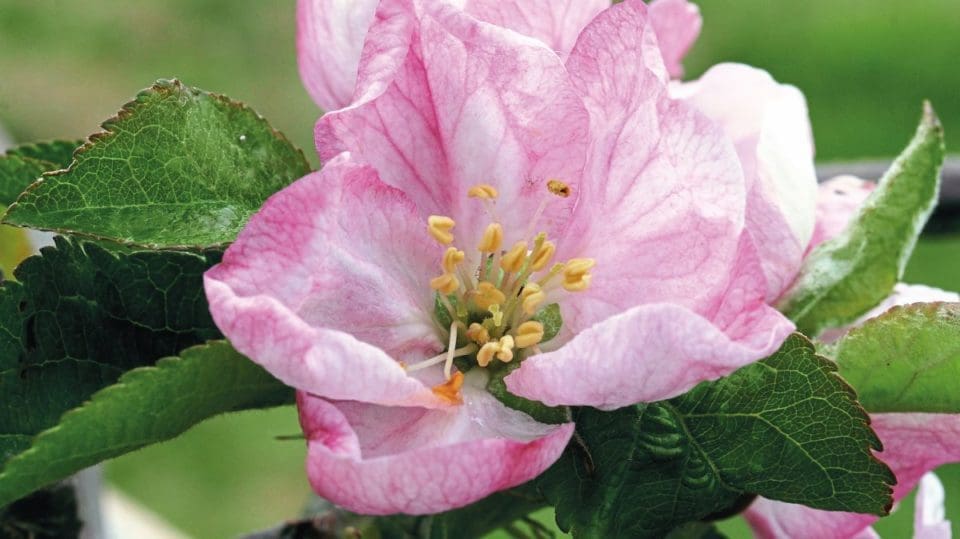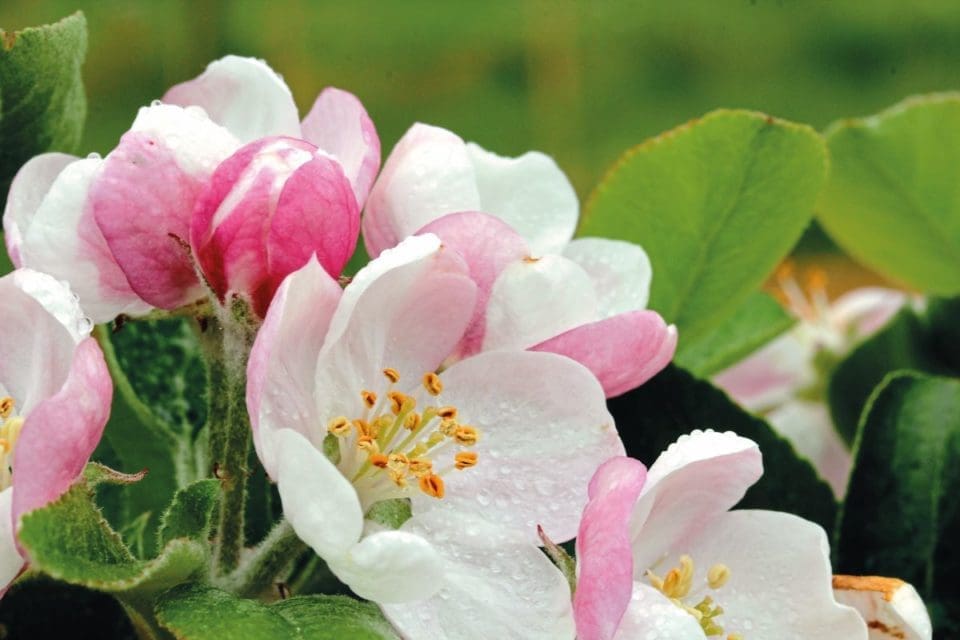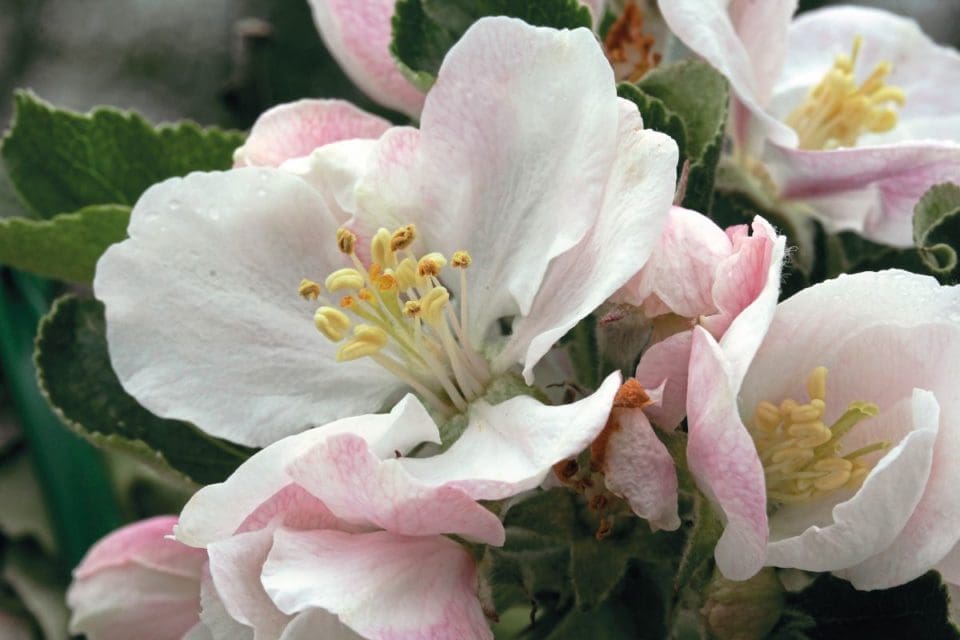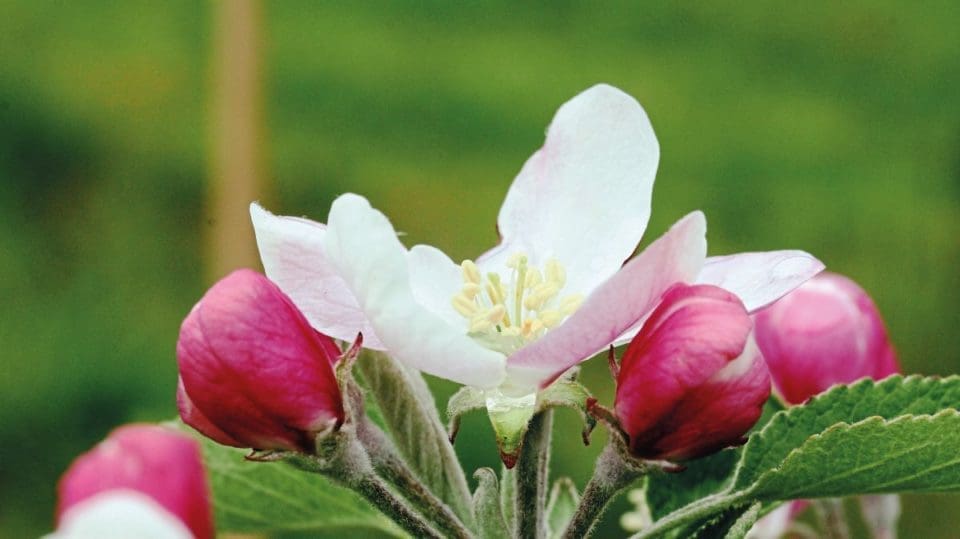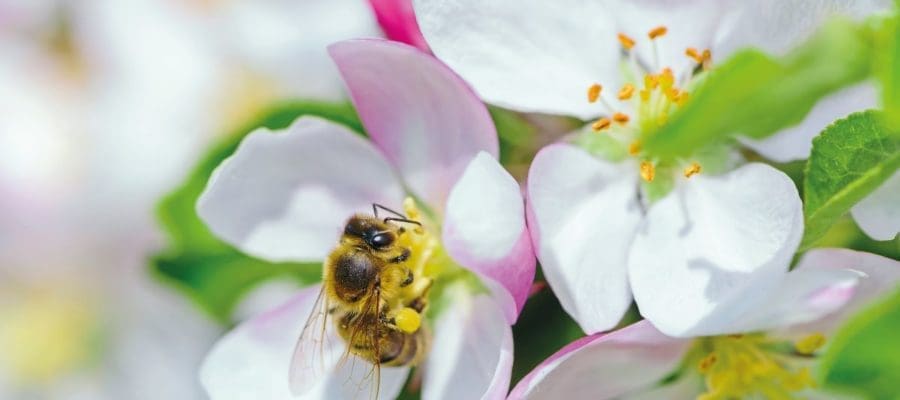David Patch explains the botany behind fruit tree pollination and techniques for success
Without doubt, pruning fruit trees is the most common area people struggle with when growing fruit trees. Pollination, however, comes a very close second. I think it is because there is a little science involved, and a lot of jargon, all of which seem to confuse and make things seem much more complicated than they really are. The reality is that with a little bit of botany, and some common sense, it’s easy to get to grips with the basics behind fruit tree pollination and learn practical steps to take to ensure the heaviest possible crops.
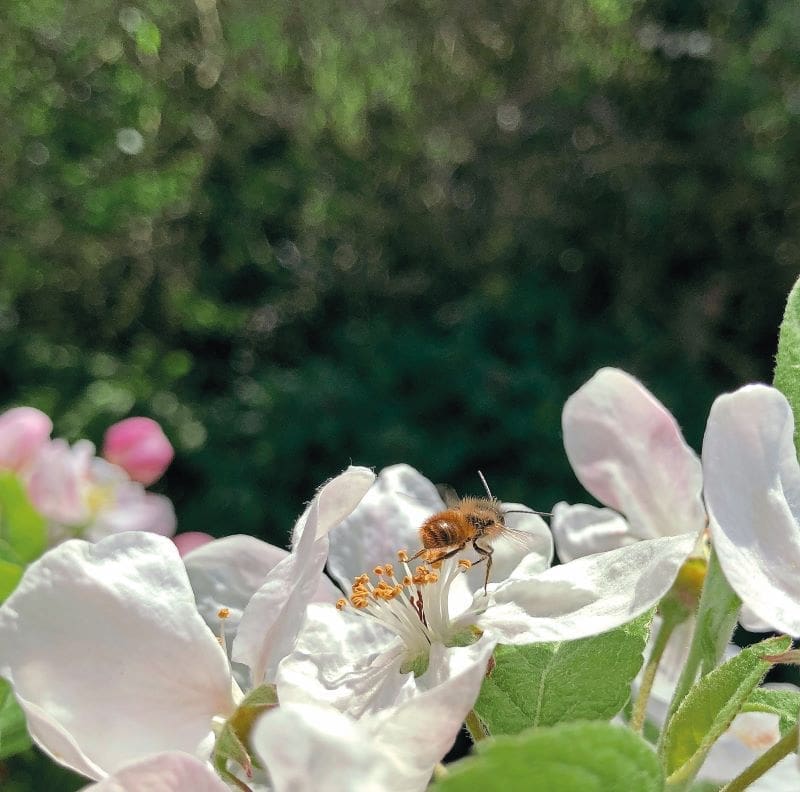
POLLINATION GROUPS
If you look on most websites or gardening catalogues, you’ll see that top fruit trees are normally given a pollination group. The pollination group basically describes the flowering time of that variety in relation to all other varieties of that particular fruit. It’s not set in stone – blossom can appear weeks earlier or later from year to year, depending on the weather, but it does act as a good general guide. There are a few different systems, using either numbers (1-7) or more commonly letters (normally A-D), and the idea is that all varieties in the same group will be flowering at the same time.
The groups all overlap though, so in effect a tree in Group B would be pollinated by any other tree in Groups A, B or C. For pollination purposes, you can also include any suitable tree within 300m or so, as bees travel a huge distance in their daily forays out for nectar and pollen, so the trees don’t have to be physically next to each other. This radius means that for many urban or suburban trees, there is generally a suitable apple tree within range. Some varieties of apple are particularly good pollinators – all the crab apples in particular, as they produce an abundance of blossom and flower for a very long period, so overlap with all the pollination groups.

SELF-FERTILE, PARTIAL AND SELF-STERILE
Next complication – not all fruit trees need a pollinating partner. Normally classed as self-fertile, these varieties will set a good crop on their own, even if there are no other fruit trees in the area. Quinces, peaches, nectarines, apricots, medlars, figs and mulberries are all self-fertile, as well as a good number of plums, gages, damsons and cherries.
There are also many excellent and widely available apple varieties, which are either fully self-fertile or partially self-fertile (i.e. will set some fruit, but the crop will be enhanced if there is a pollinator nearby) – ‘Ellison’s Orange’, ‘Egremont Russet’, ‘Fiesta’, ‘Lord Lambourne’ and ‘Superb’ to name but a few. Pear trees are, unfortunately, not quite as easy-going when it comes to pollination, as almost all varieties are self-sterile and need a pollinating partner – only ‘Conference’, ‘Concorde’ and ‘William’s Bon Chretien’ are described as partially self-fertile, and even then, the crop is normally poor and the fruit misshapen.
All of this means that – for most people, most of the time – pollination groups are a poor way by which to choose fruit varieties. Bees travel relatively long distances, there are normally suitable trees in the neighbourhood to provide suitable pollen, and many trees are self-fertile or partially so, so I’d always say choose a variety relating to what fruit you would like to eat rather than the pollination group. Pollination issues are generally caused due to poor weather, meaning the pollinating insects aren’t venturing out, rather than a lack of viable pollen.
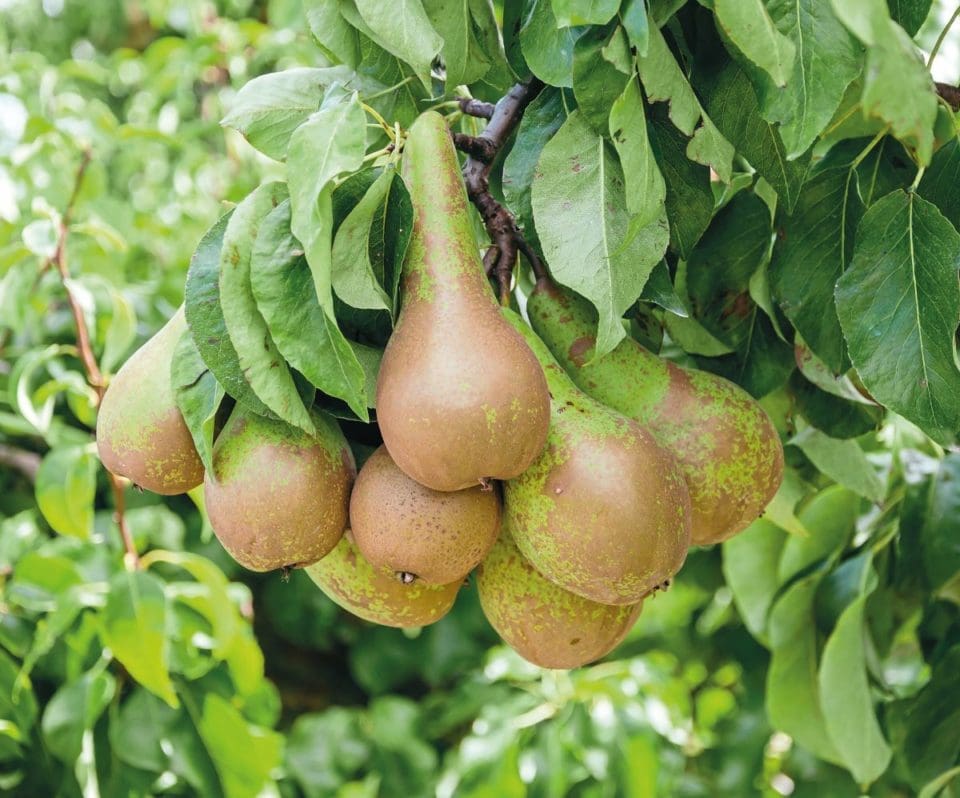
The only exception is for pear trees – there don’t tend to be so many around, you can’t always rely on a neighbour having a pear tree – so your choice is limited to planting ‘Conference’, the most reliable of the partially self-fertile varieties, or find room for two.
“Ha,” I hear you say, “but what about triploids?”
THE TRIPLOID MYTH
Many people have heard that certain varieties of apple are ‘triploid’ and as such need two other trees nearby to pollinate them. This misunderstands what is actually happening, and to get to the root of the issue I’m afraid it’s time for a little more botany.
Apples, like most other plants, usually have two sets of chromosomes (in the case of the apple, it’s two sets of 17, so a total of 34) – this is known as ‘diploid’. One set of 17 is then used from each of the male and female parents, adding up to 34 again. But just occasionally, due to natural genetic mutation, you’ll get a cultivar with three sets – the so-called ‘triploid’ varieties. Probably the most famous apple in the UK – ‘Bramley’s Seedling’ – is a triploid, as well as many other excellent varieties (‘Blenheim Orange’, ‘Ribston Pippin’ and ‘Newton Wonder’ to name but a few).
Triploids have several natural advantages – the trees are normally robust and disease-resistant, and the fruit is often larger. However, because the new number of chromosomes (3 x 17 = 51) is now an odd number, and doesn’t divide nicely in two, these plants are almost completely sterile and crucially, the pollen they produce isn’t viable so is no use for pollinating anything else.
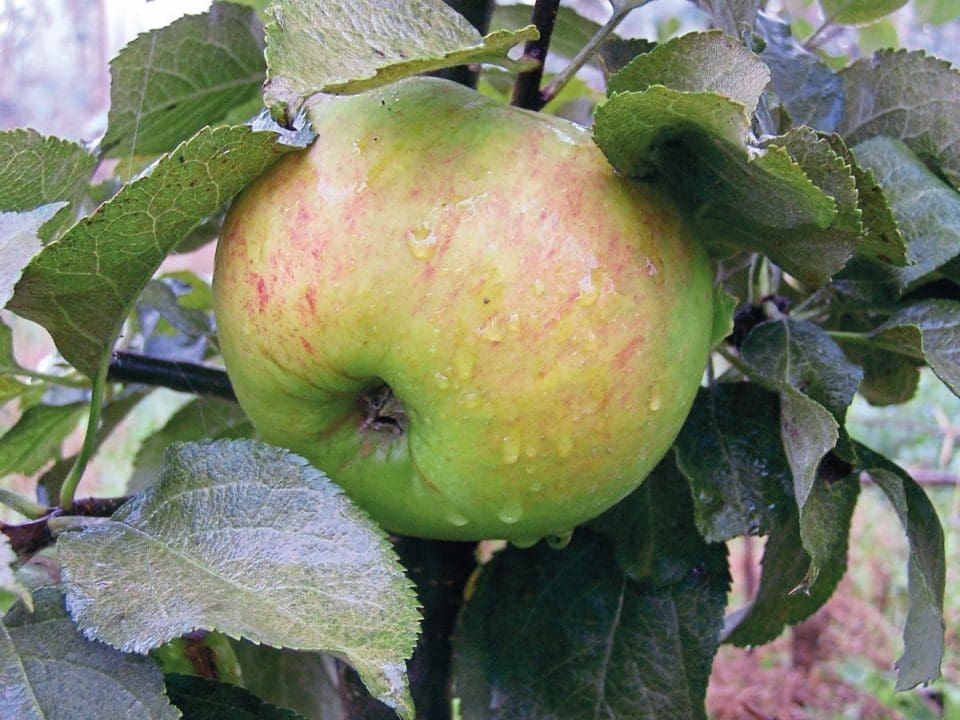
So, while the triploid such as the ‘Bramley’ apple only really needs one other apple or crab to set a crop, the same as every other variety, it won’t return the favour. If the other tree is self-fertile, or there are crab apples nearby, this isn’t a problem. It only becomes an issue if the ‘Bramley’ is planted with another self-sterile variety (or another triploid) and there are no other apples or crab apples within 300m – in which case you would actually need to plant two other apples to ensure all three could set a crop.
ENCOURAGING GOOD POLLINATION
Unfortunately, one of the major factors which affects pollination is largely beyond our control – the weather. Not only will late spring frosts damage flowers and emerging fruitlets, but cold winds and rainy weather will deter the bees from flying. Fruit tree blossom has about a three-to-five-day window where it can be successfully pollinated – if the weather is bad during that time, crops can be significantly reduced. Fleecing individual prized plants is sometimes an option (don’t forget to remove the fleece during the day to allow the bees access to the flowers) but isn’t practical on a large scale.
However, there are two things we can do to increase our chances of a good fruit set. The first is making sure there is plenty of potassium available to the tree. Potassium, or potash, is one of the three major macro-nutrients plants need to flourish. Nitrogen (N) and phosphate (P) encourage growth and root development, but potassium (confusingly labelled as K – from the Latin word Kalium) encourages flower production, fruit set and sweeter fruit. Potassium helps plants move sugar and water around the plant, and strengthens cell walls, crucial for masses of blossom and fruit. You’ll find it for sale either as sulphate of potash, a fine powder which you can simply spread a handful or two around the base of the fruit tree in early March, or else use a tomato feed, which are also generally rich in potassium.
The second way to try and maximise pollination is to try and encourage pollinating insects into our gardens by providing a wide range of food sources and habitats for them. The idea is to provide this not only at blossom time but for as much of the year as possible to support a healthy and diverse population of bees, butterflies and hoverflies. From very early sources of nectar and pollen such as winter-flowering cherries, early crocus and sloes through to late summer wildflowers and blackberries, all help make a difference.

For much more information on habitat diversity, the plight of bees and how to do your bit to help, it would be well worth looking up Habitat Aid – their excellent blog includes many relevant articles full of helpful advice, written in a clear and accessible way. www.habitataid.co.uk
APPLE BLOSSOM GALLERY
